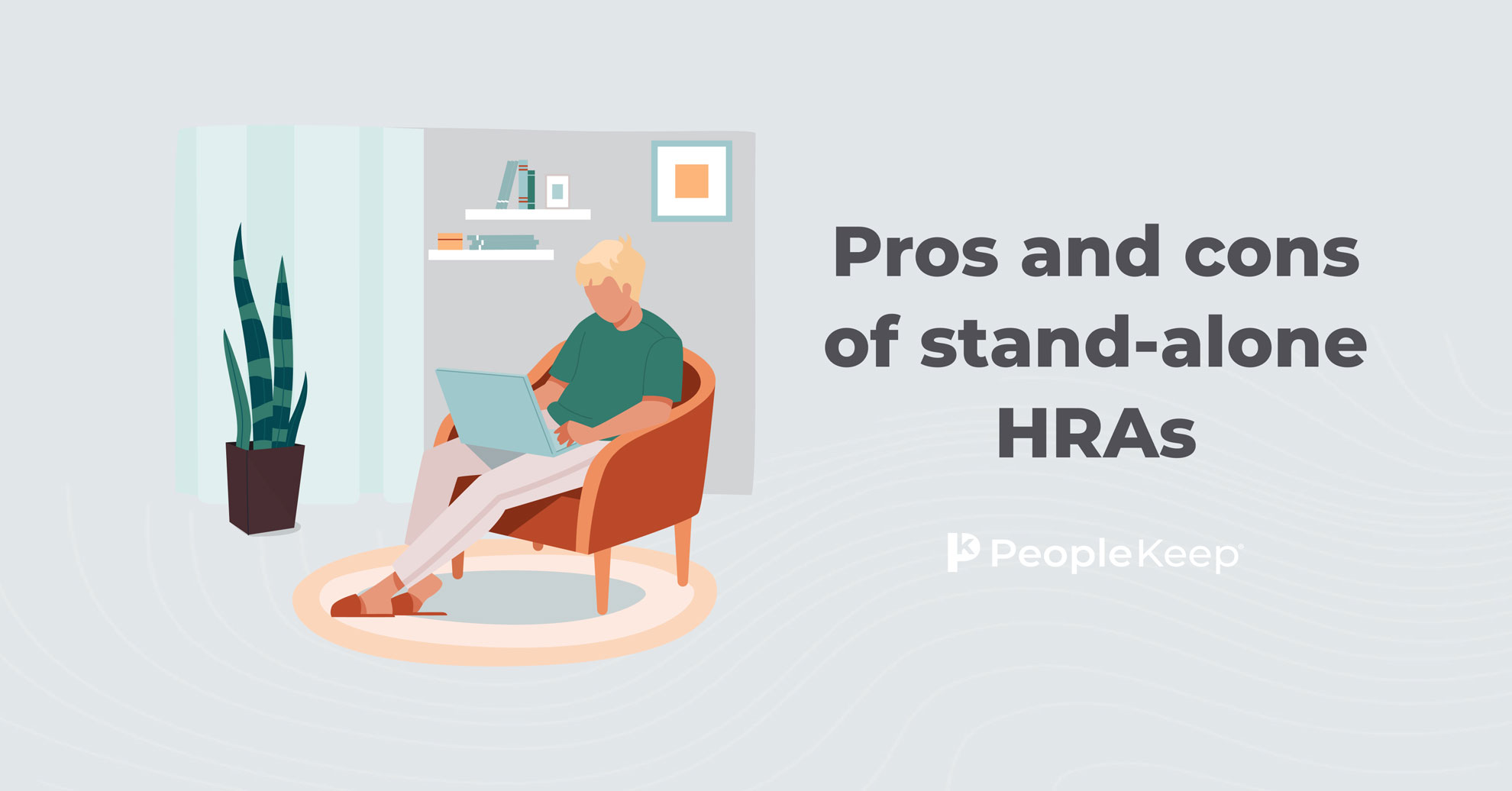2026 QSEHRA contribution limits
By Chase Charaba on October 9, 2025 at 8:15 AM
The qualified small employer health reimbursement arrangement (QSEHRA), also called the small business HRA, comes with maximum annual contribution limits. That means small businesses are limited in how much tax-free money they can offer their employees through the benefit.
The IRS outlines these annual contribution limits annually through a revenue procedure.
In 2026, small businesses may offer up to $6,450 per self-only employee and up to $13,100 per employee with a family.
In this blog post, you'll learn:
- What the new QSEHRA contribution limits are for 2026, and how they compare to 2025
- How tax reform affects how the IRS calculates QSEHRA limits
- What to do if you want to offer more than the QSEHRA limits allow
What is a QSEHRA?
A QSEHRA is an employer-funded health benefit. It allows organizations to reimburse their employees for their individual health insurance premiums and qualifying out-of-pocket medical expenses. Reimbursements are tax-free for the employer and employee.
With a QSEHRA, employees can buy the individual health insurance coverage that best fits their needs. At the same time, employers have complete budget control. They can set custom allowances up to the maximum contribution limit. This makes a QSEHRA an excellent alternative to a traditional group health plan.
Any organization with fewer than 50 full-time equivalent employees (FTEs) can offer a QSEHRA to their W-2 employees. You must offer the benefit to all W-2 full-time employees, but you can choose to include part-time employees as well.
Employees must have qualifying minimum essential coverage (MEC) to participate in the QSEHRA.
What are the QSEHRA contribution limits for 2026?
The IRS released the 2026 QSEHRA guidelines through Revenue Procedure RP-2025-321 on October 9, 2025.
For tax years beginning in 2026, small businesses can offer up to:
- $6,450 for self-only employees ($537.50 per month)
- $13,100 for employees with a family ($1,091.66 per month)
These contribution limits reflect a $100 annual increase (1.57%) for self-only employees and a $300 annual increase (2.34%) for employees with a family over the 2025 limits. That's $8.34 more per month for self-only employees and $25 for employees with a family.
Here are the QSEHRA employer contribution limits by year:
| Year | Self-only coverage (annual) | Self-only coverage (monthly) | Family coverage (annual) | Family coverage (monthly) |
|
2026 QSEHRA contribution limits |
$6,450 |
$537.50 |
$13,100 |
$1,091.66 |
|
2025 QSEHRA contribution limits |
$6,350 |
$529.16 |
$12,800 |
$1,066.66 |
|
2024 QSEHRA contribution limits |
$6,150 |
$512.50 |
$12,450 |
$1,037.50 |
|
2023 QSEHRA contribution limits |
$5,850 |
$487.50 |
$11,800 |
$983.33 |
|
2022 QSEHRA contribution limits |
$5,450 |
$454.16 |
$11,050 |
$920.83 |
For employees who become eligible for the QSEHRA midyear, you must prorate the limits. Allowances should reflect the total amount of time the employee is eligible. For example, a self-only employee who is eligible for the QSEHRA for eight months in 2026 could receive up to $4,300 through the benefit that year.
There are no employee contribution limits with a QSEHRA.
How has tax reform affected how QSEHRA limits are calculated?
The IRS calculates QSEHRA limits every year using the cost-of-living adjustments. Certain changes implemented through the 2017 tax reform laws also affect this process.
Tax reform incorporated the chained CPI—an alternative way to measure inflation in the Consumer Price Index (CPI). With the chained CPI, adjustments incorporate the economic phenomenon known as substation bias, whereby consumers react to rising prices in one good (for example, beef) by substituting similar goods (like chicken).
The result is smaller upward adjustments in inflation. For the QSEHRA, this means 2026 contribution limits are lower than they would have been with the old calculation method. This will continue to affect QSEHRA limits, as the chained CPI will result in slower incremental increases through the years.
What if I want to offer more than the annual QSEHRA contribution limit?
Depending on where you and your employees live, the QSEHRA allowance caps may not be enough to purchase a comprehensive form of minimum essential coverage (MEC).
If this is the case, your organization may benefit from another type of HRA—the individual coverage HRA (ICHRA)—that has no maximum contribution limits. An ICHRA also allows you to customize allowances and eligibility with different classes of employees.
With an ICHRA, eligible employees must have qualifying individual health insurance coverage that meets MEC.
What else can I use to set a QSEHRA budget?
The QSEHRA contribution limits are the only restriction small businesses face when creating their QSEHRA budget. There are no minimum contribution requirements.
To help you set your benefits budget for 2025, you can use several points of data, including average QSEHRA contributions. According to PeopleKeep customer data, small businesses offered an average of $442 in 2024.
You can also use our resource, "Seven strategies to set a QSEHRA budget." In this post, we walk you through different strategies to help you choose allowance amounts that benefit both your company and your employees.
How can employees spend their QSEHRA allowance?
Depending on which QSEHRA plan you choose to set up, employees can spend their QSEHRA allowance on their individual market coverage premiums, such as health, vision, and dental insurance premiums and more than 200 out-of-pocket expenses.
A few popular expenses include:
- Individual health insurance premiums
- Doctor's visits
- Eyeglasses
- Prescription and drugs
- Mental health counseling
Conclusion
The QSEHRA is an excellent way for a small business to provide health benefits to its employees. With it, employees can choose the health insurance plan that fits their needs. You can also reimburse employees for more than 200 types of medical expenses.
Keeping a close eye on the adjusting QSEHRA allowance caps is important to ensure you're offering a compliant QSEHRA and helping your employees use their benefit to the fullest.
This blog post was originally published on October 24, 2022. It was last updated on October 9, 2025, with the latest QSEHRA contribution limits.
Check out more resources
See these related articles

Pros and cons of stand-alone HRAs
Stand-alone HRAs can offer flexibility and control over healthcare expenses, allowing employers to customize plans to meet their employees' needs.

How does ICHRA affect health insurance subsidies?
Learn how ICHRA affects health insurance subsidies. Understand if employees receiving subsidies will be impacted by an employer's ICHRA offering.

Does QSEHRA disqualify employees from individual premium tax credits?
Learn how a QSEHRA affects premium tax credits. Understand if employees can still qualify for tax credits when offered a QSEHRA by their employer.



